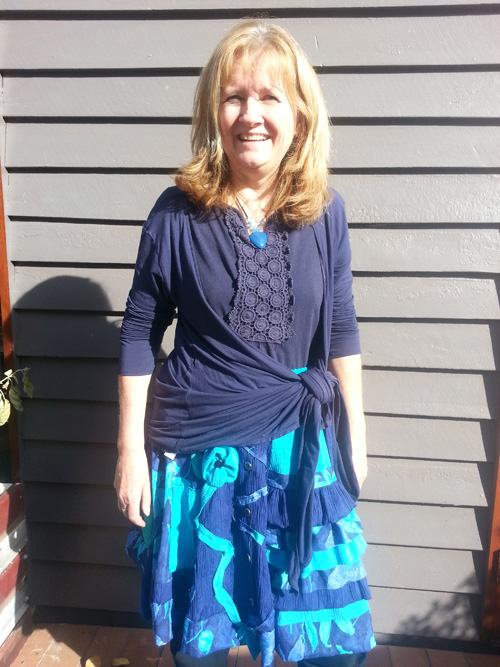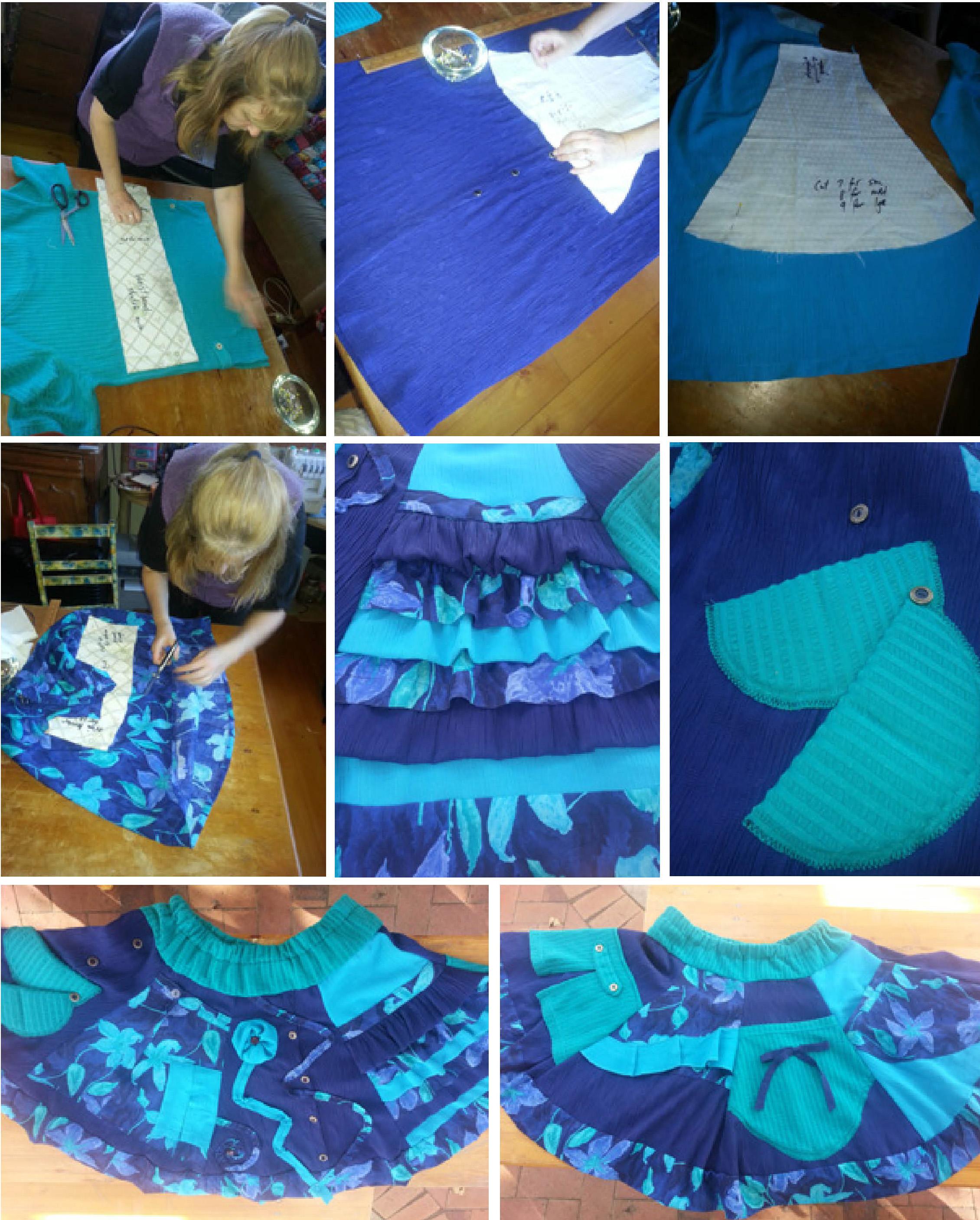 This skirt is unique in all the world and comes with a story. That’s the biggest reward of the creative process says its maker Lena Tisdall, who refashioned the skirt from old clothing that had belonged to her mother.
This skirt is unique in all the world and comes with a story. That’s the biggest reward of the creative process says its maker Lena Tisdall, who refashioned the skirt from old clothing that had belonged to her mother.
The original garments were in good condition but not particularly special in their own right. Had Lena not chosen to refashion them, they most likely would be put in a charity bin.
Donated clothes are an important source of revenue for charities – but the landscape is changing. The sheer volume of surplus clothing generated by fast-fashion consumption habits means for-profit clothing recyclers see an opportunity to on-sell this to developing nations.
The Secret Life of Your Clothes is a BBC2 documentary just screened in Britain about the thousands of tons of unwanted clothes donated to charity shops every year. “But where do they actually go? It turns out most don’t ever reach the rail of the local charity shop; they are exported to Ghana in Africa. And even though we have given them away for free, our castoffs have created a multi-million pound industry and some of the world’s poorest people pay good money to buy them.”
We can’t view this doco on-line in Australia, but I found an interesting follow-up story on The Herald Scotland website which quotes a local historian saying these cast-off clothes are swamping the African republic of Ghana, destroying its native textile industry and threatening its culture.
Everything is connected in the bigger world around us, in ways we usually don’t think much about. We’re encouraged to indulge cheap clothing consumption habits – but is it ethical, sustainable or healthful?
So getting back to Lena’s unique history skirt, she likened it to creating an art piece. “It is not just making a garment, there’s more to it than that. The history skirt project is about the process – the process of designing the panels. That was enjoyable but time consuming. It was a creative process to make something original. You are not working with a blank canvas, you have clothes which have pattern and shape already and you need to reorganise those patterns and shapes into a different form – that is the creative process.”
Over coffee at Abode yesterday, we reflected on this process – its pros and cons. I’m fully immersed in refashion with this 365-day Sew it Again project, so it is interesting to get perspective from others. Certainly it takes time and effort to refashion. It is much easier to buy cheap, new clothing – which of course is why the clothing supply chain exists. But for those with time and basic sewing skills, there are rewards in refashioning. You create clothing to suit yourself which is unique in the world, and you gain health benefits from the mindful creative journey on which the process takes you. The only costs are your time and effort – and there are no negative impacts from your actions.

Lena must be very pleased to keep a little part of her mother in her history skirt, Jane. JoSe